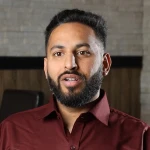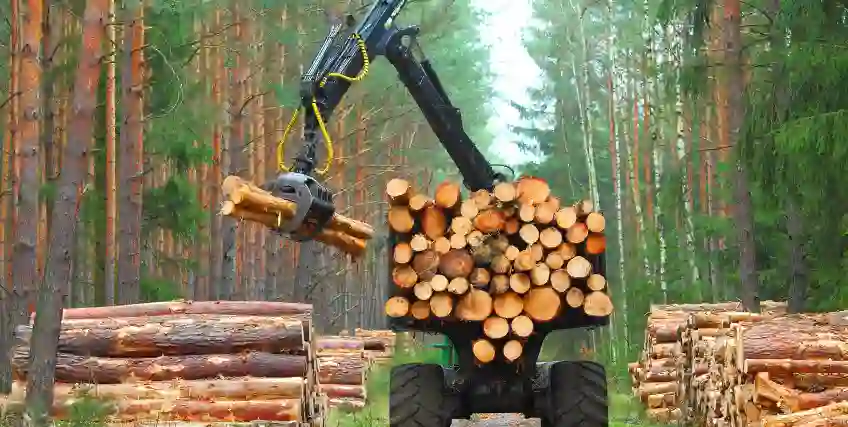Forestry Loans to Keep
Your Logging Business Moving
Looking for Business Financing?
Apply now for flexible business financing. Biz2Credit offers term loans, revenue-based financing, lines of credit, and commercial real estate loans to qualified businesses.
Set up a Biz2Credit account and apply for business financing
Heavy upfront costs is perhaps one of the most prevalent issues affecting the timber and logging business. Whether it’s purchasing feller bunchers or acquiring timberland, the price tag can be intimidating. That’s where forestry loans step in.
Forestry loans often include different funding solutions that are packaged or showcased under this umbrella. These funding solutions help entrepreneurs across the forestry sector run their businesses. Talk about needing capital to manage operations, expand acreage, or invest in new equipment; you can use funding from forestry loans to smoothen out the kinks. Whether you own a sawmill, operate logging machinery, or grow timber commercially, the right funding can help you either make or break your next season.
Experienced entrepreneurs in this sector tend to use forestry loans as a financial safety net when the cash flow is tight, and there is a lot at stake to take any chances.
What Are Forestry Loans?
Forestry loans are commercial financing options designed specifically for businesses that work in logging, timber harvesting, forestland management, and sawmill operations. From buying machinery and expanding acreage to improving working capital and recovering from natural disasters, these loans provide funding for a wide range of needs.
These loans differ from traditional equipment financing or land loans because they are tailored to seasonal income patterns, forestry-specific risks, and long-term timberland cycles. Loan terms often reflect the unique nature of forestry businesses, which may not follow monthly revenue models.
Forestry businesses also benefit from access to loan programs backed by federal agencies like the U.S. Department of Agriculture (USDA) and Farm Service Agency (FSA), providing flexible terms, low interest, and support for beginning farmers.
Whether you need help financing a new skidder or want to expand your farming operation into timber, forestry loans offer structured support for growing your venture.
Who Needs Forestry Loans and Why It Matters
Most businesses - whether it's timber operations, or sawmills, tree farms or even forest product manufacturers - operate in a capital-intensive environment. It means most of their assets and operations require heavy investment. Their assets usually include heavy equipment, large tracts of land, and labor-driven processes. All this implies that for these businesses, it is essential to have access to external funding.
Forestry loans offer important support to:
- Sawmill owners upgrading machines
- Logging contractors replacing aging skidders and loaders
- Forestland investors acquiring timber tracts
- Timber haulers dealing with rising fuel and labor costs
In forestry sector, extreme weather, shifting lumber prices, or natural disasters can disrupt cash flow balance. If you have a well-structured operating loan in place, then you can weather such situations easily.
Farmers expanding into forestry, or ranchers converting portions of land to forested areas, also benefit from these loans. Federal programs offer loan funds through FSA and USDA, especially for those who meet the eligibility criteria for beginning farmers.
Without timely financing, even profitable timber businesses risk stagnation due to delayed maintenance, missed opportunities, or supply chain issues.
Common Types of Forestry Financing
Forestry businesses often need a mix of financing products. Here are the most common types:
1. Forestry Equipment Loans
Forestry equipment loan is a type of specialized funding that businesses use to buy or rent heavy machinery like feller bunchers, harvesters, and skidders. As these pieces of equipment often require heavy upfront costs, funding solutions like this one prevent any stress to the daily cash flow cycle and improve productivity. For eligible applicants, these loans frequently come with fixed or variable interest rates and multi-year terms.
2. Land Loans for Timberland
If you are looking to acquire or expand your timberland holdings, you can explore land loans. Whether you want to plant and grow trees for future harvests or protect conservation areas, this type of funding solution can help in spread the cost of land purchases over time. And what's more is that repayment schedules are often aligned with timber harvest cycles.
3. Working Capital and Lines of Credit
Seasonal cash flow changes are another challenge that forestry businesses usually face. A line of credit or working capital loans can really step in here. They can be used to cover payroll, repairs, supplies, and even fuel for the fleet. This revolving access to money can help in stabilizing operations during slow business months or in emergencies.
4. USDA and FSA Loan Programs
Government-backed loan programs from the USDA and FSA provide low-interest options for timber businesses. These programs support beginning farmers, offer flexible loan terms, and often include guidance from a loan officer for the application process.
What Are the Benefits of Forestry Loans?
These loans offer significant advantages for small to mid-size businesses operating in the forest sector.
1. More Access to Working Capital
Seasonal harvesting and market price shifts often lead to fluctuating revenue for businesses in the forestry sector. With the capital from these funding solutions, cash flow can be stabilized, making it easier to manage operations without delays or disruptions.
2. Equipment Upgrade Made Easier
Latest machinery increases efficiency and safety of the company and all those who handle them. Forestry loans spread the costs over a period of time while upgrading the gear and avoiding large upfront payments. This reduces the pressure and makes operating the business more manageable.
3. Land Ownership or Expansion
Buying new timberland is capital-intensive. These loans help businesses grow acreage, manage forest resources better, or enter new markets without using existing reserves.
4. Disaster Recovery and Resilience
Storms, wildfires, or flooding can halt operations. Forestry loans help recover quickly by financing repairs, replacement equipment, or rebuilding storage and road infrastructure.
Key Features and Purposes of Forestry Loans
Forestry-specific lending comes with flexible options. Here are key features you should know:
1. Loan Terms and Repayment Schedules
Loan terms range from short-term working capital to 10- or 15-year land loans. Repayment can be monthly, quarterly, or seasonal depending on your revenue model and timber cycle.
2. Fixed or Variable Interest Rate
Some loans offer fixed interest rates for budgeting stability, while others offer variable rates that start lower and adjust annually. It depends on your risk preference and market conditions.
3. Flexible Loan Amounts
You can borrow from a few thousand to several million dollars, based on your needs. Loan amount approvals depend on credit, purpose, and collateral.
4. Common Uses: From Equipment to Payroll
Funds can be used for equipment loans, payroll, land purchases, road building, insurance, fuel, and more. These loans meet diverse financing needs across the supply chain.
Forestry Loans for Startups
Getting a forestry business off the ground requires capital. Here's how startup forestry equipment loans can help:
1. Support for New Timber Entrepreneurs
If you're entering the timber industry for the first time, financing gives you access to working capital and time-tested tools without risking personal savings.
2. Help with Equipment Financing
From chainsaws to skidders, forestry equipment financing offers structured repayment terms that won’t strain your balance sheet.
3. Options Backed by USDA and FSA
Programs from USDA and FSA offer low-interest microloans and business guidance to beginning farmers.
What You Can Use Forestry Loans For
Forestry financing is flexible. Here’s where the funds can go:
1. Land Acquisition and Development
Buy raw or developed timberland to expand your production footprint. Use loan funds to prepare land for sustainable forestry or conservation.
2. Purchase or Repair of Logging Equipment
Invest in skidders, loaders, saws, or repair damaged gear. Keep operations moving with well-maintained, efficient machinery.
3. Cover Payroll and Labor Costs
Manage wages for sawmill crews, haulers, and seasonal workers. Timely salary payments keep your business competitive and fully staffed.
4. Build Processing or Storage Infrastructure
Upgrade sawmills, build dry sheds, or create processing units. Infrastructure expansion can reduce bottlenecks and increase output capacity.
Eligibility and Application Process
Securing a forestry loan starts with knowing what you need and how to apply. Most lenders will ask for:
- Business license and registration
- Two years of financial statements or projections
- Equipment or land invoices
- Forest management plan
To qualify, you should have a legitimate farming operation, fair-to-good credit, and a use case aligned with forest products or timber.
Programs from the Farm Service Agency (FSA) or USDA may have additional requirements but offer more flexibility. A good loan officer can help you understand your options and walk you through the paperwork.
Timing matters too. Apply before your busiest season or ahead of capital purchases for better processing.
Tips to Strengthen Your Forestry Loan Application
Applying for a loan? Here are ways to improve your chances:
- Keep personal and business finances separate
- Get a professional timberland valuation
- Track every expense and income source to show cash flow
- Improve your credit before applying
- From daily output to cost per acre, know your numbers
- Consult a certified loan officer who understands forestry loans
Avoid applying during peak lending seasons when approval times can spike. Bring clarity to your repayment plan and show how you’ll deploy the loan amount efficiently.
Trusted by Thousands of Small Business Owners in America.**
Simply because we get what you go through to build a business you believe in.
**Disclaimer: All stories are real, as told by real business owners. Customers do not receive monetary compensation for telling their stories.
From One Entrepreneur to Another: We Get You
We understand what's behind building a business you believe in.
All stories are real, as told by real business owners. Customers do not receive monetary compensation for telling their stories.



Articles on Forestry Loans
Forestry Equipment Financing: Grants, Loans & Leasing for 2025
Finding money to run or grow a forestry business isn’t easy. The costs add up fast, including money to buy land and heavy
Working Capital Loans for Forestry Operations What You Need to Know
Forestry operations are the backbone of the timber and paper industries, but running a logging business isn’t cheap. From
Top Forestry Equipment Financing Solutions for Small Logging Businesses
Small logging businesses need to have an array of equipment to do their jobs. While the equipment can help make it easier
Frequently Asked Questions on Forestry Loans
1. What qualifies as eligible forestry equipment under business financing?
Most commercial lenders and programs accept logging trucks, harvesters, skidders, chainsaws, and even GPS-enabled planning tools as valid purchases. Always double-check with your lender.
2. Do USDA or FSA loans cover sawmill construction?
Some loan programs allow construction-related costs, especially if the sawmill contributes to rural development or job creation.
3. Is refinancing possible with forestry loans?
If your current rates are high or repayment terms tight, refinancing is a common option, especially after you've built business credit.
4. What if my forestry business was affected by natural disasters?
Emergency funding may be available through USDA or state disaster relief programs. Your loan officer can guide you through this.
5. Can I get a forestry loan if I’m new to timber?
Some lenders might offer financing to new businesses. Borrowers can apply especially through startup forestry equipment loans or USDA's beginning farmer microloans. You may need a solid plan and basic financials.
Frequent searches leading to this page
Term Loans are made by Itria Ventures LLC or Cross River Bank, Member FDIC. This is not a deposit product. California residents: Itria Ventures LLC is licensed by the Department of Financial Protection and Innovation. Loans are made or arranged pursuant to California Financing Law License # 60DBO-35839



